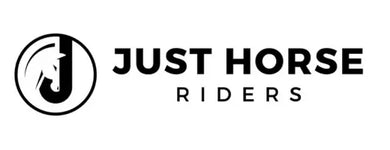The Unseen Threat: A Pony's Hidden Battle with a Thorn
In the enchanting world of horse ownership, unexpected injuries are a well-known woe. Yet, a recent case involving a pony named Fergus highlights the need for vigilance and professional care when managing equine health. Fergus's story is a compelling reminder that even the smallest foreign objects can lead to significant health problems if not promptly addressed.
The Start of a Mysterious Lump
Fergus, a playful New Forest pony, developed a small, painless lump on his hind fetlock in May. Initially, it was easy to dismiss. His owner, Nariece Acworth, could not have predicted this was the beginning of a year-long ordeal. Despite meticulous scans and assessments by veterinarian Kirsten Broadley from Seadown Veterinary Hospital, no foreign body was found. Fergus continued his days seemingly unaffected.
Advanced Diagnostic Challenges
The 7mm blackthorn embedded within Fergus's annular ligament went undetected for a year, a stark example of the diagnostic challenges veterinarians face. Advanced imaging techniques failed to reveal the thorn initially. It wasn't until a period of rest and further scanning that the intruder was discovered. The thorn had caused significant soft tissue disruption, risking severe infection and potentially ending Fergus's competitive career.
The Thorn Removal Surgery
With the thorn it was time for surgery. Fergus underwent standing surgery whilst under sedation—a delicate procedure indeed! The surgery was a success, and Fergus entered the healing phase with regular veterinary check-ups, safe to say, he's now receiving star treatment.
Preventative Measures in Equine Health
Nariece offered an important piece of advice to fellow horse owners: cut down blackthorn and fence off pastures. This proactive step can significantly reduce the risk of such injuries. Horses, with their love of mischief and exploration, often find themselves tangled in unexpected problems. A little prevention goes a long way.
The Crucial Role of Vigilant Veterinary Care
This incident underscores the unpredictable nature of managing equine health. **Vigilant veterinary care** is not a luxury but a necessity. Continual monitoring and re-evaluation in cases of unexplained lumps or injuries can prevent minor issues from becoming major crises. As the saying goes, "Better safe than sorry."
Impact of Undiagnosed Injuries
Undiagnosed injuries, even ones as seemingly harmless as a thorn puncture, can lead to severe long-term consequences if left untreated. Fergus's story is a sobering reminder of this fact. The case also highlights the importance of having access to advanced diagnostic techniques and expert care to manage such situations effectively.
Equine Health and Veterinary Innovations
Equine health management is continuously evolving. Staying informed about the latest advancements in veterinary care, from diagnostic techniques to treatment options, is crucial for horse owners. By doing so, we equip ourselves better to handle unexpected situations and ensure the well-being of our beloved horses.
Fergus's story, while harrowing, ended with a sigh of relief thanks to professional veterinary intervention. The key takeaways from his experience are a testament to the importance of vigilance, care, and continuous learning in equine management.
Key Takeaways:
- Continual monitoring and re-evaluation are crucial in cases of unexplained lumps or injuries in horses.
- Even seemingly harmless injuries like thorn punctures can have severe consequences if left undiagnosed and untreated.
- Vigilant veterinary care is essential in managing equine health and preventing long-term damage.
- Preventative measures such as cutting down blackthorn and fencing off pastures can help reduce the risk of unexpected injuries.
- Advanced diagnostic techniques and expert veterinary intervention can make all the difference in the successful treatment and recovery of injured horses.
For more on this story, check out the original article on Horse & Hound.
```
